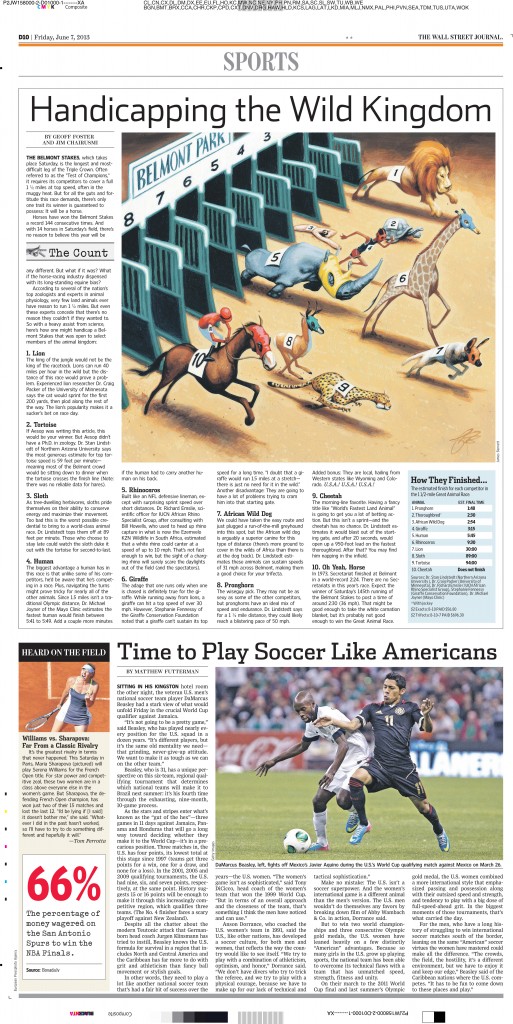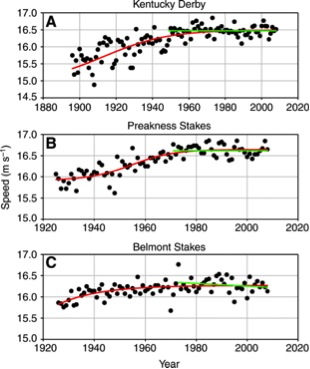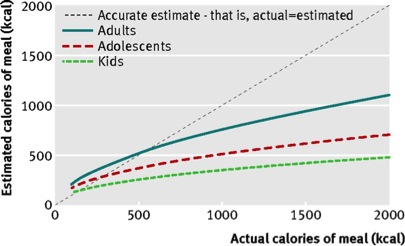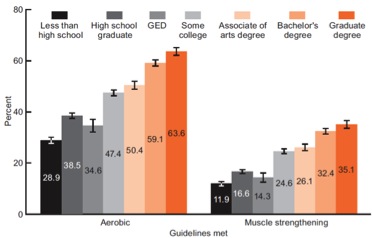Archive for the ‘Current Events’ Category
No One Wants Another 9/11
In my last post I made the point that no one should be that surprised that the government is collecting all sorts of electronic data and using it to try to detect and track suspicious activity by potential terrorists. The revelation that a low level security contractor was responsible for the leaks and what to do about them and him has generated all sorts of debate. That having been said, this whole incident makes me think about the post World War 2 “Red Scare” and the emergence of the so-called national security state after World War 2. One of the justifications for the national security state is and was that “no one wants another Pearl Harbor”.
The extended quotes below come from the CIA website and are comments that President Eisenhower made at a news conference following the Soviet downing an American spy plane in May of 1960. Eisenhower was a great man who understood the limits of military power and coined the phrase the military industrial complex warning about the perils of the national security state. Here is video of Eisenhower’s farewell speech on January 17, 1961. It seems to me that many of the issues he warned about in this speech and also discussed after the U-2 incident are still with us, and much of what he warned about has come to pass. One question stemming for the tracking program is just how much tracking should we tolerate based on the concept of “no one wants another 9/11”. I don’t have an answer for this complex question but it is certainly something that we all need to discuss and consider when we think about the kind of country and world we want to live in.
click to watch
Excerpts of Ike’s Comments About the U-2 Incident
“I HAVE MADE SOME NOTES FROM which I want to talk to you about this U-2 incident. . . .
“The first point is this: the need for intelligence-gathering activities.”
“No one wants another Pearl Harbor. This means that we must have knowledge of military forces and preparations around the world, especially those capable of massive surprise attacks.”
“Secrecy in the Soviet Union makes this essential. . . .”
” . . . ever since the beginning of my administration I have issued directives to gather, in every feasible way, the information required to protect the United States and the free world against surprise attack and to enable them to make effective preparations for defense.”
“My second point: the nature of intelligence-gathering activities.”
“These have a special and secret character. They are, so to speak, `below the surface’ activities.”
“They are secret because they must circumvent measures designed by other countries to protect secrecy of military preparations.”
“They are divorced from the regular visible agencies of government which stay clear of operational involvement in specified detailed activities.”
“These elements operate under broad directives to seek and gather intelligence short of the use of force–with operations supervised by responsible officials within this area of secret activities. . . .”
“These activities have their own rules and methods of concealment which seek to mislead and obscure– . . .”
“Third point: how should we view all of this activity?”
“It is a distasteful but vital necessity.”
“We prefer and work for a different kind of world–and a different way of obtaining the information essential to confidence and effective deterrents. Open societies; in the day of present weapons, are the only answer. . . .”
“My final point is that we must not be distracted from the real issues of the day by what is an incident of a symptom of the world situation today.”
Oprah, Data Mining and Government Snooping
The news over the last couple of weeks that the National Security Agency is routinely tracking all sorts of electronic communications as part of the “War on Terror” has gotten a lot of attention. It has raised concerns about government as big brother, privacy, and when the government is justified in “following” people. This is part of a big data mining effort trying to figure who potential “bad guys” are communicating with and then connect the dots associated with their networks to prevent acts of terror. The idea is that monitoring so-called metadata can provide all sorts of information and in fact tell you a lot about a person or group of people.
Thoughts About Tracking?
Last March I asked “Who is Tracking You?” and pointed out many of the issues associated with all of the data that is floating around out there. In light of that post, I guess I am not surprised by the fact the Federal Government is casting a wide net on communications metadata. A so-called “total information awareness” program emerged just after 9/11 and was widely criticized. The program was thought to have been canceled but appears to have been merely “rebranded”. So here are a few observations related to our lives in the era of big data:
- Any data that can be mined will be mined.
- All data is fundamentally mineable. Even data that was not created digitally can be digitized and then mined. This has happened with pre-digital books and magazines as part of text mining, and provided information about social change based on how word use changes with time. For example the use of the word “women” has increased dramatically since the 1970s.
- There are four fundamental kinds of snooping:
- The Gladys Kravitz on steroids effect or just plain snooping by someone with access to a database. Here is a link about someone targeting women via Minnesota driver’s license data.
- The dog ate my homework….this happens when a lap top or thumb drive with things like medical or banking records are lost.
- Hacking by criminals looking to make money.
- Governments, businesses or even political campaigns looking to mix and match data for some reason.
- Some data is part of crumbs or footprints we leave behind doing various transactions or just living in an electronic world. Some is data that is intentionally gathered for example when the cashier asks for your phone number when you check out of certain stores (your phone number can be linked to all sorts of things). Some is data that is passively collected and can be used later like video surveillance tapes. As the Boston bombing shows getting information out of images can also be crowd sourced. The final way personal data becomes available is via what we voluntarily disclose on social media as part of the societal phenomenon of Oprahization.
- The final point is that who knows where the government ends and the big IT and communications companies begin. None of this happened without the collaboration of the big companies. How hard did they fight to not give up the data? When electronic copies of the internal corporate memos are leaked (one of the positives of all of this) it will be interesting to wade through the doublespeak and see just how willingly the big boys collaborated with the Feds.
End of Privacy?
I guess the overwhelming conclusion is that we have entered the “end of privacy” era. We are all addicted to the convenience and efficiency of the electronic world and I doubt that for most of us there will be any going back. Our Oprahized world suggests that a lot of people are embracing a world with no privacy.
Secretariat and Non-Human Limits!
The Belmont Stakes horse race will be run this Saturday. Forty years ago Secretariat won the 1.5 mile race by an incredible 31 lengths. His time of 2:24 is faster by 2 seconds than the next fastest time posted over the last 40 years. Some have argued that Secretariat’s run at the Belmont in 1973 is the greatest performance in sports history. The video below shows this remarkable feat.
click here for video
Last summer during the Olympics I posted a number of videos of people like Bob Hayes and Jim Ryun and also wrote about the role of relaxation and rhythm in sports. Note the length of the great horse’s stride and how little Secretariat’s head bobs. From what I can tell his jockey never uses the whip. Have you ever seen such power and relaxation at the same time?
Humans Still Getting Faster
One other piece of brain candy related to this is that as a result of selective breeding over several hundred years horses may have reached a plateau in terms of performance. The figure below is from a fascinating 2008 paper that shows this for the three Triple Crown races.
By contrast, the data from humans suggest that we are still getting faster, at least in some events. The human to animal comparison is confused by major changes in training, technique, equipment, and (unfortunately) doping for humans. There are also more humans competing at a high level than ever before as the population grows and more people from more countries participate. Things in horse racing have been relatively stagnant by comparison. As I mentioned last summer when reasonable assumptions about artificial tracks are made it is unclear if performances are physiologically better now than in the 1960s.
Summary
Thinking about records and the limits of performance is an interesting intellectual exercise that can shed light on all sorts of things and fuel a lot of fun arguments. Watching a performance like Secretariat’s always leaves me with a sense of awe. I hope you enjoy it as much as I do.
Exercise vs. Aging
Almost all of the data I show in this blog comes from studies in humans or various population databases. I am going to make an exception today and show you some data about what happens when mice that are genetically modified to age early are also subjected to exercise training.
Mitochondrial Aging the Key?
One idea is that a prime driver of the aging process is a loss of mitochondrial function over time. The mitochondria are small energy factories in our cells. When they become defective the idea is that byproducts released from the mitochondria damage cells and cause aging. The picture below shows what happens when the system responsible for DNA proof reading in the mitochondria is absent in mice. The animal on left is a control while the animal on the right is aging prematurely due to the genetic alteration. The mice are called progeroid because they have features associated with a rare form of premature aging that is seen in humans called progeria.
Exercise Keep Mitochondria Healthy
Exercise keeps our mitochondria healthy as we age and it also stimulates muscle and other tissues to increase the number of mitochondria in each cell. So what happens when porgeroid mice exercise trained for 45 minutes per day three times per week for five months? The pictures below show the hearts of the mice. The panels on the left are from wild type (WT) that is genetically normal. The middle panels show an enlarged heart from porgeroid animal that was sedentary. The right panel shows that exercise training blunted the response seen in the sedentary animal.
The authors concluded that:
“Here we show that 5 months of endurance exercise induced systemic mitochondrial biogenesis, prevented mitochondrial DNA depletion and mutations, increased mitochondrial oxidative capacity and respiratory chain assembly, restored mitochondrial morphology, and blunted pathological levels of apoptosis in multiple tissues of mitochondrial DNA mutator mice. These adaptations conferred complete phenotypic protection, reduced multisystem pathology, and prevented premature mortality in these mice. The systemic mitochondrial rejuvenation through endurance exercise promises to be an effective therapeutic approach to mitigating mitochondrial dysfunction in aging and related comorbidities.”
These data and the conclusions drawn from this study clearly confirm and explain what is happening in the master athlete super agers we have discussed before.
Fast Food Calorie Counting
Today’s post is short and in preparation for the fact that many of us eat out more during summer vacation and when we are on the road doing all sorts of different things. The chart below is from a study of more than 3000 people in the New England area eating at national fast food chains. The key finding is that people in every age group under estimate how many calories they are eating when that grab a meal at a fast food outlet.
There is also recent evidence that better labeling reduces the number of calories purchased at fast food restaurants by women and not men. Finally, we tend to eat more when we eat out and the consumption of either pre-prepared food or eating out more are factors contributing to the obesity epidemic. The implications of this data are pretty obvious and start with clear labeling of the food we buy in whatever venue and then paying attention to the labels. Especially for men!
Life Expectancy & Entitlements: Economic Inequality or Behavioral Inequality?
Discussion about the retirement age and reforming Medicare and Social Security spending is likely to be a long term part of the political debate (or is it gridlock) in the U.S. The well respected Economist magazine based in London suggests that President Obama’s legacy is dependent on getting entitlements under control so that the U.S. can spend money on other things. The rationale for this is laid out in the graph below that comes from the most recent projections from the non-partisan and independent Government Accountability Office (GAO). It is the most optimistic scenario in the GAO report. The point is that we are headed to an unsustainable financial situation if Social Security, Medicare and other health spending, along with interest payments by the Federal Government are not brought under control. One way to control these costs is to increase the retirement age to reflect the fact that life expectancy has increased dramatically since Social Security and Medicare started. The primary concern with raising the retirement age is that most of the gains in life expectancy have occurred in better educated people who also tend to have higher or even much higher incomes. So raising the retirement age is seen “unfair” by some commentators.
Health Behaviors Education and Income
The next three graphics come from a recent CDC report about the state of U.S. heath from 2008-2010. The first is a table that shows the impact of education and income on smoking rates. The column on the right is the percent nonsmokers. Less educated and/or lower income people smoke a lot more than better educated higher income people.
The next two graphs show the impact of education on physical activity and obesity. There is a similar effect of income on physical activity and obesity and as I noted above education and income are highly correlated.
PHYSICAL ACTIViTY vs. EDUCATION
OBESITY (BMI > 30) vs. EDUCATION
What is the Real Problem?
I have discussed this topic before and it seems to me that what is unfair is that aggressive steps are not being taken to address these issues in a comprehensive way for all Americans. A couple of posts ago I showed you what key risk factors alone and in combination did to life expectancy to a cohort from Scotland. From what I can tell each of the key risk factors above is worth about 3-5 years of life expectancy and the data above suggest that on average well educated/higher income people have about 1-2 fewer risk factors than poorly educated/lower income people and that difference explains most of the difference in life expectancy between groups. The other key point is that the risk factors above are independent of access to traditional medical care which may not do much to improve the health of low income people with limited access to health care. There is a lot of denial about all sorts of things in the current political and public policy arenas. Failure to aggressively address key behavioral risk factors for the population as a whole and especially for less educated/lower income people is a good example of just how pervasive this denial is.
How Much Mileage For A Prodigy?
Last weekend there was a piece in the New York Times on 16 year old Alana Hadley who is running more than 100 miles per week in hopes of breaking 2:40 for the marathon. Her story is the most recent chapter in a long running debate about heavy training in general and marathon running in specific for teenagers and even younger kids. I had several e-mail exchanges with Terry Laughlin and Amby Burfoot on the topic and here are some thoughts that might be of interest.
- Is this a good idea? Who knows and who knows what motivates young people to do these things. Everyone worries about parental pressure, but this is probably true for prodigies in any field.
- Would this be a big deal if she were a swimmer, a golfer or a tennis player? These sports are full of teenage girls who have won at the highest levels. Some of the early winners go on to long successful careers while others are one hit wonders.
- There is a general rule of thumb that most people can only really train at the highest level for perhaps 6-8 years. This might be getting stretched with the emergence of financial opportunities, but eventually people get injured or choose to focus on other things.
- For younger runners is it best to focus on shorter distances and move up later? In other words train for the mile or 2-mile (3,000m) and let the longer races come.
- This has happened before. The best example was Wesley Paul who broke three hours when he was 9 years old. Paul still runs but was never world class. The link below is what looks like a pretty good list of year specific records for the marathon.
Don’t forget Gerry Lindgren
In 1964, 18 year old Gerry Lindgren “beat the Russians” in the 10,000m in the USA-USSR track meet held in the Los Angeles Coliseum. At the height of the Cold War this was seen as a David and Goliath like accomplishment. His high school 5k record stood for 40 years and is still probably the best ever if you consider is was run on a dirt track. The brief video clip below shows Lindgren at age 19 breaking the world 6 mile record as he is nipped at the tape by the legendary Billy Mills. Lindgren competed at the 1964 Olympics, and then went on to disappear and appear several more times and is a now you see him now you don’t collection of urban legends. Perhaps the greatest ever and greatest never all wrapped up into one person.
click here for video
You are currently browsing the archives for the Current Events category.











